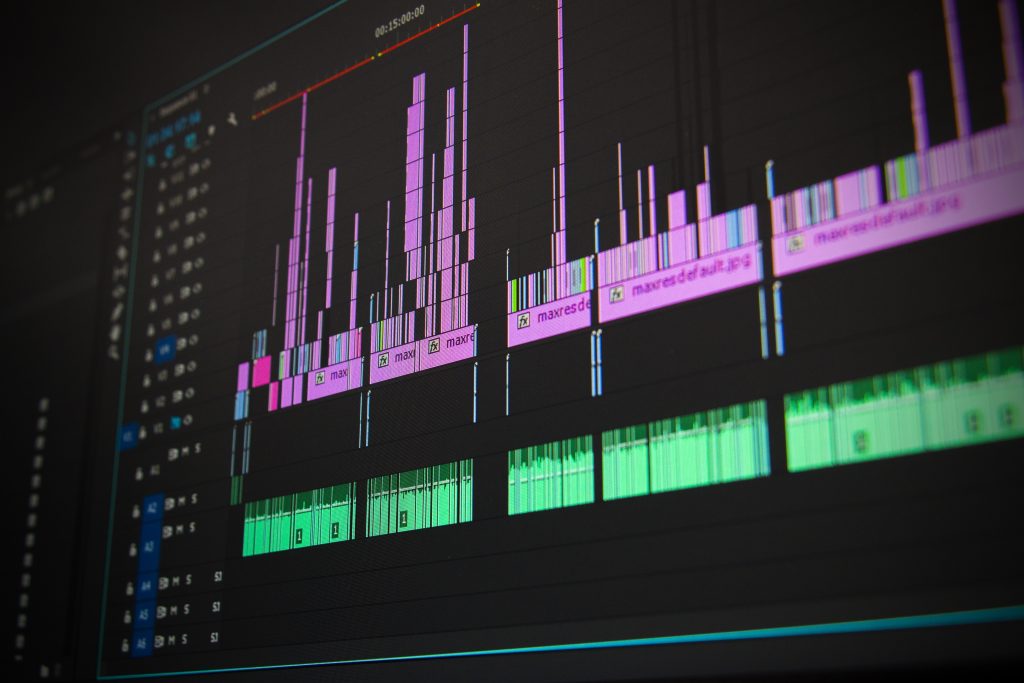Ah, distortion – it’s the audio equivalent of a deliciously spicy dish. Just the right amount can make a meal unforgettable, but too much will have you running for the nearest glass of milk. So, what is distortion in audio, and why does it matter? Buckle up, fellow audiophiles, because we’re about to dive into the wonderfully wavy world of sound.
In this blog post, we’ll uncover the secrets behind audio distortion – from its various types, like linear and nonlinear, to common causes, such as clipping and overloading electronic components. And, of course, we’ll arm you with the knowledge to minimize and correct distortion for crystal-clear audio quality.
What is distortion in audio? Audio distortion refers to the alteration or deformation of an audio signal’s original waveform, which can impact sound quality. It comes in various types, such as linear and nonlinear distortion, and can be caused by factors like clipping, overloading electronic components, and poor audio encoding or compression.
What is audio distortion, and why does it matter?
Audio distortion refers to the alteration or deformation of an audio signal’s original waveform. While any kind of audio processing can alter an audio signal, the term “audio distortion” is typically used to describe either intentional or undesired sonic destruction.

There are two types of audio distortion: linear and nonlinear. Linear distortion is a change in the amplitude of a signal, whereas nonlinear distortion is a change in the frequency content of a signal. Most people talk about audible distortion in reference to nonlinear distortion.
Another classification includes frequency distortion, caused by insufficient bandwidth and non-flat frequency response between bandwidth limits, and nonlinearity distortion, caused by nonlinearities in the hardware.
Audio distortion matters because it can have a significant impact on audio quality. Distortion can introduce unwanted noise or artifacts, making the audio less clear and potentially unpleasant to listen to. In professional audio production, controlling and managing distortion is essential for maintaining the quality of the final output, ensuring that listeners have an enjoyable experience.
AKAI Professional MPK Mini MK3

AKAI Professional MPK Mini MK3
What are the types of audio distortion?
Several types of audio distortion you might come across in mixing and mastering include harmonic distortion, inharmonic distortion, clipping, overloading electronic components, poor audio encoding or compression, etc.
1. Harmonic distortion
Harmonic distortion occurs when an analog or digital processor adds to or increases the overtones of the original signal. Overtones are multiples of the base frequency or fundamental. Hence, if the fundamental frequency is 100 Hz, overtones will occur at 200, 300, 400, and so on.
Overtones rub and resonate against the original signal as their level rises or as more overtones are inserted. It can be subtle and warm, or it can be overpowering and edgy. You’re dealing with harmonic distortion, whatever way you cut it.
Analog components like transformers and tubes can add these types of harmonics when pushed hard enough. Tape saturation, which involves driving a real or virtual tape machine, also introduces harmonic distortion.
Harmonic distortion can “fill up” or “bolster” a weak frequency range without significantly offsetting the perceived tonal balance. But pushing too hard towards harmonic distortion can tint the sound more than you’d like. And because it’s such a compelling effect, it’s difficult to tell when you’ve gone too far.
2. Inharmonic distortion
Inharmonic distortion is the opposite of harmonic distortion in that it adds musically related overtones to a signal that can sound fairly natural and appealing in a moderate amount. It introduces frequency components into the signal that aren’t musically related to the input and can often sound ugly or muddy.
A little grunge is sometimes precisely what the doctor ordered, and other times it’s best avoided. There are several varieties of inharmonic distortion, some of which will be discussed more below. Aliasing and truncation both produce inharmonic distortion that sounds distinctly digital, yet inharmonic distortion can also be produced by analog equipment.
Notable is “intermodulation distortion,” which occurs whenever a signal comprises many frequencies—basically all music, unless you’re enjoying listening to sine waves—and encounters a nonlinearity.
Intermodulation distortion, or IMD, generates tonal products that are both higher and lower than the original frequencies in the signal, which may quickly become a noisy mess with a full-frequency source like music. The tough thing about IMD is that it frequently occurs alongside harmonic distortion, so striking the appropriate balance is a vital talent to learn.
When done correctly, both analog and digital clipping can sound incredibly fantastic, and they can make signals appear louder without using additional headroom…
3. Clipping
Clipping distortion is caused by overloading a processor (pushing it past its maximum capacity or operating level), which causes harmonic distortion. In the analog world, this is caused by exceeding a piece of equipment’s recommended—or specified—capabilities.
Clipping distortion occurs when a signal is pushed over 0 dBFS (the digital ceiling) in a fixed-point system. Although 16 and 24-bit fixed-point bit widths are common, practically all DAWs now operate at 32 or 64-bit floating points for internal operations. Floating point systems have substantially greater clipping points—by more than 1,000 dB.
When done correctly, both analog and digital clipping can sound incredibly fantastic, and they can make signals appear louder without using additional headroom, or they can preserve their apparent level while using less headroom.
They can, however, generate inharmonic components that horribly color sound. Moreover, without careful monitoring, it can be difficult to distinguish between a healthy amount of clipping and excessive clipping.
4. Overloading
This can happen when a speaker is pushed beyond its capabilities due to insufficient power supplied to the amplifier, which leads to the input signal being clipped and creating distortion.
5. Poor audio encoding or compression
This can also cause distortion, as an excessively hot audio signal with high voltage (amplitude/volume) or maxing out the bits at any digital stage can lead to peaking.

6. Aliasing
Aliasing is a digital phenomenon that occurs when a source’s frequency content exceeds half of the sampling rate. The Nyquist frequency, or simply “Nyquist,” denotes this point of no return. As these “too high” frequencies contact Nyquist, they bounce back down and become folded into the audible band in an unmusical, inharmonic form rather than being caught and printed.
Hence, if you record at 44.1 kHz, any signal above 22.05 kHz will be an alias. This isn’t usually an issue when recording an analog source, whether with a microphone, instrument DI, or through analog electronics.
This is because any good analog-to-digital converter includes an “anti-aliasing filter” that removes frequencies above Nyquist before they are converted to a digital signal. Yet, aliasing occurs frequently in a completely digital world because so many nonlinear processes produce distortion well over 20 kHz.
7. Truncation distortion
Truncation distortion occurs when the bit-depth of an audio signal is reduced without dithering. Without dither, converting a 24-bit signal to a 16-bit signal would result in truncation. Moving from 24-bit to 8-bit without dither leads to audible truncation distortion.
8. Bitcrushing
Aliasing distortion and truncation are frequently combined into a type of distortion processor known as a bitcrusher. Bitcrushers often have settings for lowering the sample rate and bit-depth—also known as word length. They’re one-stop shops for introducing aliasing and truncation distortion (through sampling rate lowering) (via bit-depth reduction).
Bitcrushing is an excellent sound in the appropriate setting. Yet, when it does not function, it truly does not work.
These are just a few of the most prevalent distortions you’ll come across during the engineering process, but they’re enough to provide some important pointers. They’re also useful as umbrellas: “overdrive,” which is found on most amplifiers, may appear to be its own thing until you realize it’s a type of clipping distortion.
How can audio distortion be corrected in post-production?
Audio distortion can be corrected in post-production using a combination of techniques, including restoration techniques, equalization, and noise reduction or filtering.
- Restoration techniques: This involves using tools such as gates/expanders, EQ/filters, and multiband compressors to address basic audio issues. More complex projects may require specialized processors like de-clickers, spectral editors, or dialog noise suppressors, along with a top-notch spectrum analyzer.
- Equalization: This can be employed to balance the audio’s frequency content and reduce any harshness or imbalances in the sound spectrum.
- Noise reduction and filtering methods: This can help remove unwanted background noise and artifacts from the audio signal, resulting in a cleaner and more pleasant listening experience.
Additionally, pay close attention to the dialogue recorded in multiple ways, such as boom, lapel mic, and on-camera mic. Dialogue editors can listen through everything, clean up errors and distortions, and create a clean and coherent audio track.
The process of fixing clipping distortion involves guessing the original signal and attempting to reconstruct it. While this method can add some distortion, the result is often better than the clipped version.
Moreover, ensuring enough headroom (e.g., setting it at -6 dB) can prevent clipping and distortion, allowing for the application of effects and processing without overloading the signal.
If you want even more tips and insights, watch this video called “What Is Distortion? From The Axiom Audio Glossary: Audio Terms Explained” from the Axiom Audio YouTube channel.
Conclusion
Well, folks, it’s time to wave goodbye to our deep dive into the world of audio distortion. After all, we don’t want to leave you feeling too distorted! So, have you mastered the art of taming those pesky sound waves? And did I cover everything you wanted to know? Let me know in the comments section below – I read and reply to every comment.
If you found this article helpful, share it with a friend, and check out my full blog for more tips and tricks on audio production and sound quality. Thanks for reading, and may your audio always be crystal clear and distortion-free!
Key takeaways
This article covered what distortion is in audio. Here are some key takeaways:
- Audio distortion involves the alteration or deformation of an audio signal’s original waveform.
- Types of distortion include linear, nonlinear, frequency distortion, and nonlinearity distortion.
- Distortion can negatively impact audio quality, introducing unwanted noise or artifacts.
- Common causes of distortion are clipping, overloading electronic components, and poor audio encoding or compression.
- Identifying distortion involves listening for artifacts, visualizing waveforms, and analyzing the audio spectrum.
- Minimizing distortion requires adjusting audio levels, using high-quality equipment, and proper encoding and compression settings.
- Correcting distortion in post-production involves restoration techniques, equalization, and noise reduction or filtering.















